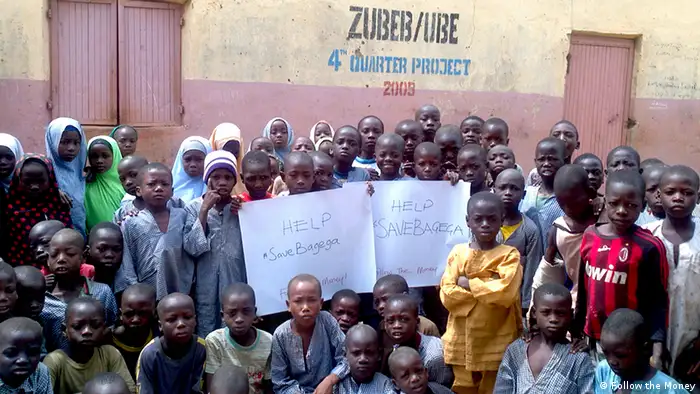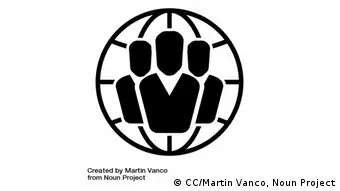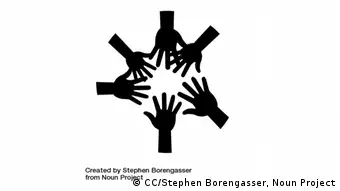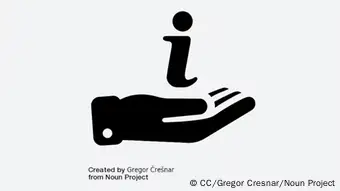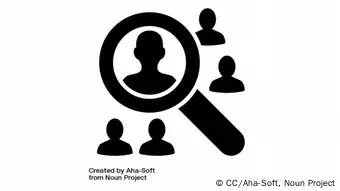In focus
The core of Article 19: Media for the people
With freedom of expression and access to information for all as the ultimate goal, there are four functions media projects have to work towards. But how can they do so in the era of digital innovation?
Article 19 might sound abstract but its demands are very concrete. All groups of society have to be able to express their opinions freely (1), and their voices have to be actually heard (2). They also have access to information (3) and are able to hold those in power accountable (4).
Thus, the broad notion of freedom of expression and access to information can be divided into these four functions of the media that stem from Article 19. These are supporting participation and inclusion, creating a public sphere, providing access to information and holding those in power accountable.
Even in an ideal media environment, media outlets do not address all functions at once. A call-in radio show, for example, will support participation and inclusion but in many cases it will not hold those in power accountable. On the other hand, an investigative program might not specifically support inclusion but be strong at holding to account.
Creating a public sphere
Freedom of expression requires a public sphere in which opinions are not simply expressed but are actually heard. Article 19 differentiates between the freedom to hold opinions and the freedom to express these opinions. This means that people should have both the right to look for, use and share information and opinions should not be restricted. The arena in which information and ideas are found, shared and received is the public sphere. By creating a public sphere, the media can ensure peoples' voices can actually be heard.
Digital technologies have changed the face of the public sphere. The rise of the Internet and mobile devices has fundamentally transformed the way people interact. Social media content can be both peer-to-peer communication between two users and published content for a larger audience. Audiences can engage in the production of media content through gathering, processing, analyzing and publishing information. However, to what extent digital technologies help to empower people to act in the public sphere remains questionable.
Nevertheless, as the boundary between publishing and communication becomes blurred, it has become easier for new actors to enter into public debate. This can bring topics to the attention of society that were previously ignored by the mass media. Media projects beyond the traditional media, bloggers and users can thus enrich public debate with their views, comments and new information. Simply producing and publishing information online, however, does not ensure that it is being read and that these topics are indeed being recognized in public debate.
For media development organizations, digital technologies broaden the number of possible partners in enhancing public debate. They are no longer dependent on collaborations with traditional media organizations to support that goal. In fact, distinguishing between journalists on the one hand, and activists, bloggers, NGOs, citizen journalists, Twitter users, etc. on the other, isn’t useful in the digital age. With regard to media development and the function of creating a public sphere and encouraging debate, the only question is how a project contributes to this goal.
Supporting participation and inclusion
It is equally important that – within this public sphere – every voice has an opportunity to be heard. This is especially vital with regard to minorities and disadvantaged groups. The media, therefore, have the function of supporting participation and inclusion and making sure all groups of society can engage in public discourse. Enhancing the inclusiveness of society is a central aim of development work.
However, the fact that digital technologies make it possible for a much larger share of the population to publish opinions and talk about their concerns does not mean those people are actually participating in an inclusive debate within society. Taking into account the digital divide in the Global South, there is a question of which groups in society actually receive more opportunities to participate as a result of digital technologies. The traditional divides (rural-urban, rich-poor, men-women) are even more acute in the digital age. Nevertheless, journalists, citizen journalists, bloggers and members of minorities or disadvantaged groups can use digital technologies to help foster participation and inclusion. Innovative approaches have to find ways to engage different groups in society in public debate.
Providing access to information
Access to information is a basic human right and includes the right of access to information held by public bodies, and the right of citizens to have access to a broad array of information. Digital technologies offer many opportunities to increase access to information for large parts of society. In this respect, they can strengthen access as well as the amount of available information. This may include making government data publicly accessible or issuing flood warnings via SMS.
However, the lack of access to these technologies due to digital gaps within society can create new barriers and inequalities. Digital technologies can even prevent people from accessing information. Around the world, governments are censoring information on the Internet. Some Internet-thinkers see equally the danger of “filter bubbles.” Web 2.0 algorithms might limit or impede access to information, to a certain spectrum of information. At the same time, they might be deprived of the contextualization needed to make this information relevant to them.
Access to information also includes the right to request information from the government. Traditional media organizations are more likely to be successful in demanding information from authorities through the power of their media institutions than non-professional media, even if they constitute an important part of the new media arena. On the other hand, digital technologies offer new ways of gathering information and of making it available to the public.
Holding those in power to account
Freedom of expression and access to information are needed in order to ensure transparency and accountability within society. Holding those in power to account for their activities in office has become one of the central functions of traditional media. Ideally, this should help to improve governance in society. By supporting local actors in strengthening the right of access to information, media development organizations are also helping build up tools to demand more accountability.
With the rise of digital technologies, this function is no longer limited to traditional media. Digital technologies can make large sets of government data available online. They can also channel public protest against corruption or other forms of bad governance. At the same time, digital technologies have created new ways to criticize and control governments. Whistleblowers find access to large audiences through websites like WikiLeaks. Investigative journalists can cooperate internationally in analyzing data.
DW recommends
WWW links
- Date 15.03.2016
- Author Erik Albrecht and Roslyn Kratochvil Moore
- Feedback: Send us an e-mail. Please include your name and country in your reply.
- Print Print this page
- Permalink https://p.dw.com/p/1ID1T
- Date 15.03.2016
- Author Erik Albrecht and Roslyn Kratochvil Moore
- Send us your feedback.
- Print Print this page
- Permalink https://p.dw.com/p/1ID1T

